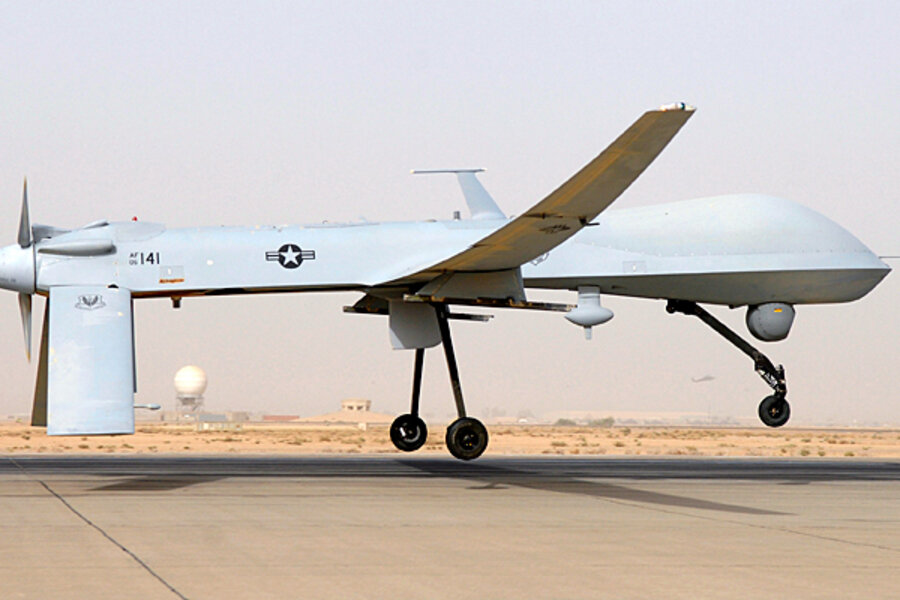Iranian jets fired at a US Predator drone on Nov. 1 – an occurrence the Obama administration didn’t acknowledge until one week later, on Nov. 8.
The more cynical critics on the blogosphere wondered aloud whether the delay had anything to do with the presidential election on Nov. 6 – speculation that Pentagon officials vehemently deny.
“We routinely do not advertise our classified surveillance missions,” press secretary George Little said.
There are other reasons the Pentagon would want to keep the attack under wraps, says retired Navy Cmdr. Christopher Harmer, who from 2008 to 2009 was director of future operations for the US Navy Fifth Fleet in the Middle East.
In this case, the US military may have wanted to conduct some “close conflict data analysis,” he says. This would involve trying to analyze which air bases the Iranian jets came from or to analyze the sensors on the Predator drone to see if it picked up any firing rounds.
Five or six days is “an appropriate amount of time where military professionals are going to want to review the tapes, review the data,” adds Mr. Harmer, now senior naval analyst at the Institute for the Study of War in Washington.
The military has “a fairly detailed dossier” on the Su-25 “Frogfoot” fighter jets, he says. “However, Iranians might have modified it in some way, and the Predator may have picked up on some of that,” he continues. “We know the Iranians are very capable of modifying equipment for their use: They are very inventive, and they have a great military-industrial complex.”
The questions for military analysts may have included, Is this just a regular Su-25, or have the Iranians automated it? Is it carrying some kind of new weapons or sensors?
They may have also conduct a “spectrum analysis” on the jet exhaust. “If you have a highly sensitive camera, you tell if those engines are being maintained well. Are they well designed, and what kind of jet fuel are they burning?” Harmer says.
There are different grades of jet fuel, similar to how US gasoline is available in supreme or regular unleaded. “If the Iranians are burning low-grade jet fuel, that may be an indication that their oil refining capability is not what it needs to be,” Harmer says. “You could conclude, OK, it’s a low-grade jet fuel, which means that the Iranian military economy is starting to suffer from the effects of sanctions.”
He adds, “These are very small indicators, but as you pull them together, you can start to build a better picture of what’s going on inside Iran.”





